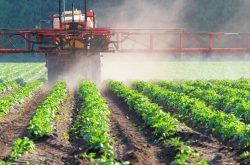 A recent study reveals that residing in regions with heavy pesticide use may substantially elevate cancer risk, comparable to smoking’s impact. The findings highlight that the cumulative effect of multiple pesticides, rather than one specific chemical, is likely the main driver of heightened cancer risk.
A recent study reveals that residing in regions with heavy pesticide use may substantially elevate cancer risk, comparable to smoking’s impact. The findings highlight that the cumulative effect of multiple pesticides, rather than one specific chemical, is likely the main driver of heightened cancer risk.
In areas with intensive agricultural pesticide use, such as the Midwest, there may be an elevated cancer risk, particularly for non-Hodgkin’s lymphoma, leukemia, and bladder cancer. These findings highlight significant public health concerns regarding the long-term health impacts of pesticide exposure.
Pesticides are commonly used to manage pests and weeds but can negatively affect agricultural and household environments. The study examined nationwide data from all U.S. states, covering 3,143 counties and 89,000 farmers, to assess how various pesticide use patterns influence cancer rates, comparing the risk to that of smoking, a well-established cancer risk factor.
The researchers developed profiles of agricultural pesticide use across different counties, focusing on usage patterns rather than individual pesticides. These profiles were then compared to cancer rates. The study pinpointed the most frequently used pesticides in counties with patterns associated with the highest cancer rates.
The study revealed that agricultural pesticide use carries a cancer risk comparable to tobacco smoking for various cancers, especially in regions with high agricultural activity. Specific pesticide combinations may be more strongly linked to increased cancer rates, underscoring the need for public health services to prioritize caution in safeguarding community health.
Despite the potential risks posed by pesticides, agriculture depends on them to sustain productivity, making their complete removal impractical. The researchers aim for their findings to raise awareness about the origins of produce and the chemicals it may be exposed to, encouraging more informed consumer choices.
To view the original scientific study click below:
Comprehensive assessment of pesticide use patterns and increased cancer risk





